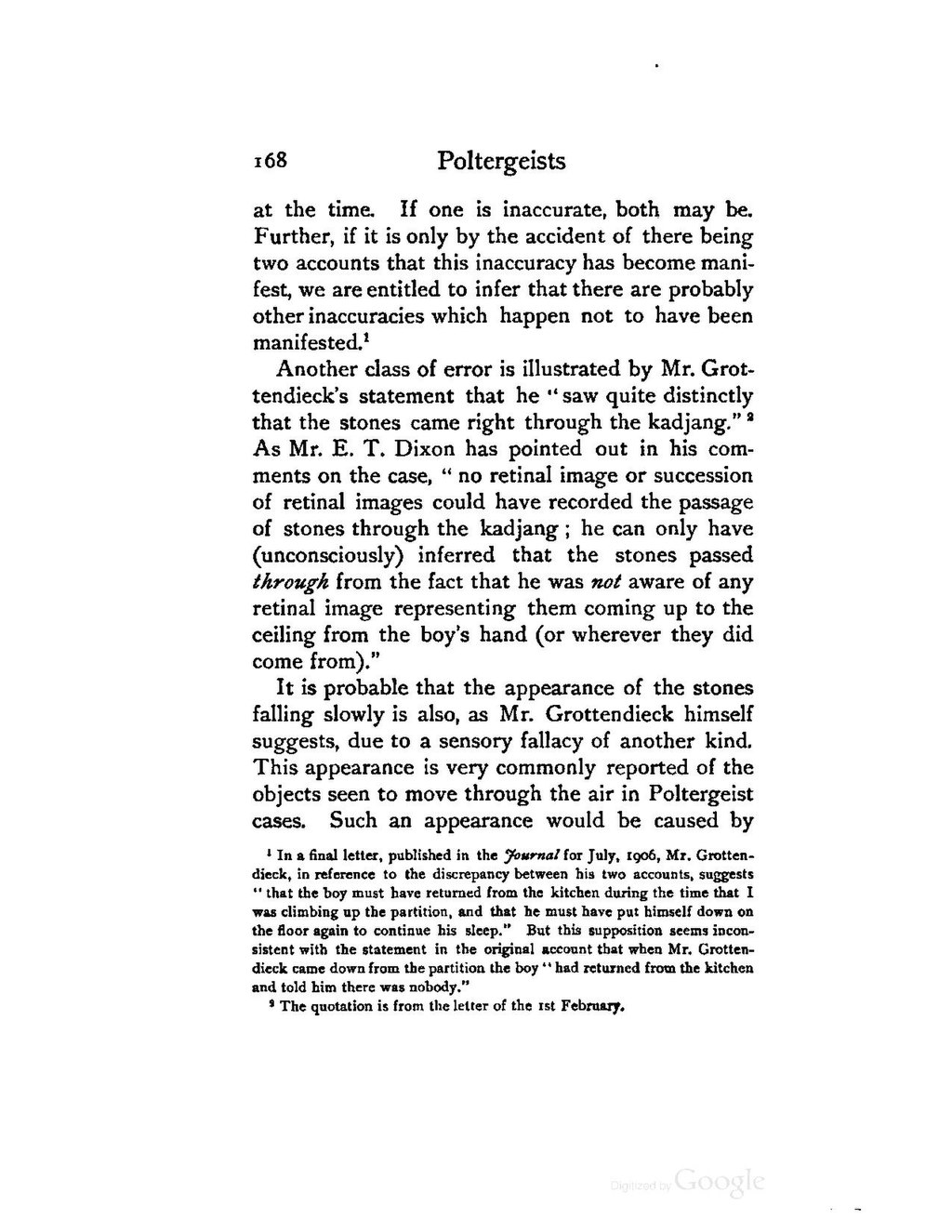at the time. If one is inaccurate, both may be. Further, if it is only by the accident of there being two accounts that this inaccuracy has become manifest, we are entitled to infer that there are probably other inaccuracies which happen not to have been manifested.[1]
Another class of error is illustrated by Mr. Grottendieck's statement that he "saw quite distinctly that the stones came right through the kadjang."[2] As Mr. E. T. Dixon has pointed out in his comments on the case, "no retinal image or succession of retinal images could have recorded the passage of stones through the kadjang; he can only have (unconsciously) inferred that the stones passed through from the fact that he was not aware of any retinal image representing them coming up to the ceiling from the boy's hand (or wherever they did come from)."
It is probable that the appearance of the stones falling slowly is also, as Mr. Grottendieck himself suggests, due to a sensory fallacy of another kind. This appearance is very commonly reported of the objects seen to move through the air in Poltergeist cases. Such an appearance would be caused by
- ↑ In a final letter. published in the Journal for July. 1906, Mr. Grottendieck. in reference to the discrepancy between his two accounts. suggests "that the boy must have returned from the kitchen during the time that I was climbing up the partition, and that he must have put himself down on the floor again to continue his sleep." But this supposition seems inconsistent with the statement in the original account that when Mr. Grottendieck came down from the partition the boy" had returned from the kitchen and told him there was nobody."
- ↑ The quotation is from the letter of the 1st February.
